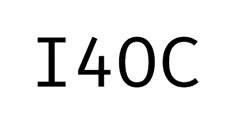Propiedades psicométricas del Inventario de sexismo ambivalente en estudiantes peruanos
DOI:
https://doi.org/10.18050/psiquemag.v9i1.2496Palabras clave:
Sexismo ambivalente, Psicometría, Validez, ConfiabilidadResumen
La presente investigación se orientó a establecer las propiedades psicométricas del Inventario de sexismo ambivalente (ISA) en jóvenes de instituciones educativas técnicas del distrito de Huaral, el tipo de estudio que se utilizó fue instrumental, se trabajó con una muestra censal, la cual comprendió 1000 estudiantes, de edades entre los 18 a 30 años. Se realizó el análisis ítems del inventario, arrojando valores mayores a 0,3, se realizó el análisis factorial exploratorio (AFE), donde se demostró la unión de 5 factores los cuales manifiestan el 51,1% de la varianza total, del mismo modo, se ejecutó el análisis factorial confirmatorio (AFC) de segundo orden, donde se evidencian buenos índices de ajuste, además, se obtuvo una adecuada confiabilidad del inventario, coeficiente Alfa de Cronbach de 0,868 y coeficiente Omega de 0,869. Como conclusión, se pudo establecer que el ISA posee adecuadas propiedades psicométricas, y resulta ser un instrumento válido y confiable para su aplicación dentro de la población establecida.
Descargas
Referencias
Ato, M.; López, J. y Benavente, A. (2013). Un sistema de clasificación de los diseños de investigación en psicología. Anales de Psicología, 29 ( ), 1038-1059.
Costa, P., Oliveira, R., Pereira, H. & Leal, I. (2015). Adaptação dos Inventários de Sexismo Moderno para Portugal: O Inventário de Sexismo Ambivalente e o Inventário de Ambivalência em Relação aos Homens. Psicologia Reflexão e Crítica, 28(1), 126-135.
Escobedo, M., Hernández, J., Estebané, V. y Martínez, G. (2016). Modelos de Ecuaciones Estructurales: Características, Fases, Construcción, Aplicación y Resultados. Revista Ciencia & Trabajo, 18 (55), 16-22.
Fernández, S., Arias, W. y Alvarado, M. (2017). La escala de sexismo ambivalente en estudiantes de dos universidades de Arequipa. Av.psicol. 25 (1), 85-96.
Glick, P. & Fiske, S. (1996). The Ambivalent Sexism Inventory: Differentiating hostile and benevolent sexism. Journal of Personality and Social Psychology, 70 (3), 491-512.
Instituto Nacional de Estadística e Informática. (2017). Perú: indicadores de violencia familiar y sexual. Recuperado de https://www.inei.gob.pe/media/MenuRecursivo/publicaciones_digitales/Est/Lib1465/libr o.pdf
León-Ramírez, B. & Ferrando, P. (2013). Assessing sexism in a sample of Mexican students: A validity analysis based on the Ambivalent Sexism Inventory. Anuario de Psicología, 43(3), 335-347. Recuperado de http://www.redalyc.org/articulo.oa?id=97030658005
Ministerio de la Mujer y Poblaciones Vulnerables. (Julio, 2018). Programa Nacional contra la violencia familiar y sexual, informe estadístico, violencia en cifras. Recuperado de https://www.mimp.gob.pe/files/programas_nacionales/pncvfs/publicaciones/informe- estadistico-04-2018_PNCVFS-UGIGC.pdf
Organización Mundial de la Salud. (2016). Género y salud de la mujer, hallazgos por país. Recuperado de http://www.who.int/gender/violence/who_multicountry_study/fact_sheets/per/es/
Parodi, F. (2017). Adaptación del inventario de sexismo ambivalente para adolescentes de secundaria - San Juan de Lurigancho, Lima. (Tesis de Licenciatura). Universidad César Vallejo, Perú.
Pobea, M. (2015). La encuesta. [Diapositivas]. Cuba: Sala de lectura digital David Wald.
Rodríguez, J. (2017). Propiedades psicométricas del inventario de sexismo ambivalente en los pobladores del Asentamiento Humano Pesqueda. (Tesis de Licenciatura). Universidad César Vallejo, Perú.
Sánchez, P. (2009). ¿Qué es el sexismo? Recuperado de https://diversidad.murciaeduca.es/orientamur/gestion/documentos/definicion_de_sexismo.pdf
Vaamonde, J., & Omar, A. (2012). Validación argentina del inventario de sexismo ambivalente. Alternativas en Psicología, 16(26), 47-58.
Descargas
Publicado
Número
Sección
Licencia
Derechos de autor 2020 PsiqueMag

Esta obra está bajo una licencia internacional Creative Commons Atribución-NoComercial-SinDerivadas 4.0.
Usted es libre de:
- Compartir — copiar y redistribuir el material en cualquier medio o formato
- El licenciador no puede revocar estas libertades mientras cumpla con los términos de la licencia.
Bajo las condiciones siguientes:
-
Reconocimiento — Debe reconocer adecuadamente la autoría, proporcionar un enlace a la licencia e indicar si se han realizado cambios<. Puede hacerlo de cualquier manera razonable, pero no de una manera que sugiera que tiene el apoyo del licenciador o lo recibe por el uso que hace.













